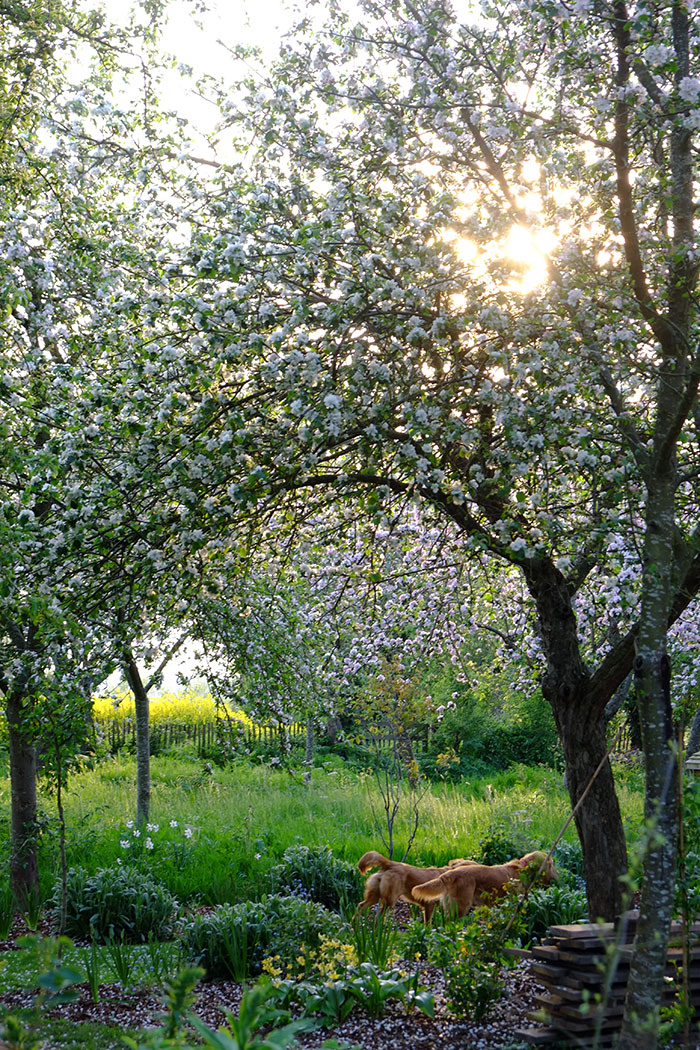Gardening books: my top 7 to leaf through this winter


Simply sign up to the Life & Arts myFT Digest -- delivered directly to your inbox.
Gardeners are spoilt for new reading this Christmas. There are books on design, books of memoirs and books on gardens abroad, including the garden that I carry in my head as an example of modern design and flowery charm.
Since 1996, Le Jardin Plume near Rouen in Normandy has been the project of Patrick Quibel and his horticulturally dedicated wife Sylvie. It combines an underlying structure of regular lines and proportions with extremely pretty planting, and it aims in many places for what they describe as l’opulence. Their new book is published by Ulmer at €32 and is aptly entitled Le Jardin Plume — Comme un jeu avec la nature (“a game with nature”). Indeed, it is one, playful and pretty in a volume that readers with below-average French can enjoy. The main contents are photographs that enlighten franglais readers month by month. Some of them are too arty, but they are worth studying. The text is doing wonders for my botanical French, from double-flowered ancolies in spring to a dangling grass called amourette that has taken up residence among a clump of them. An excellent photograph captures Sylvie’s blend of art and resolve, showing her in black and white at the top of a garden ladder with hedge cutters held vertically to attention.
In Britain, this union of wild and cultivated has been a special element in work by Dan Pearson, garden designer-elect of the failed London Garden Bridge. We will never know how he might have coped with the high wind and exposed site, so ill-suited to a garden, as the project has been abandoned. Instead, we can enjoy his Natural Selection: A Year in the Garden (Guardian Faber, £20), which gathers articles he wrote for about 10 years in The Observer newspaper. After spending time in the Gower Peninsula in South Wales, he found that “I always question why I bother to go to the lengths to create a garden when I see such fine-tuned balance, everything in its place and just getting on with it, out in the wild”. I firmly disagree. I never see “balance” and so I never question that there are wonderful effects that gardeners can contrive, “playing with nature”, as the Quibels well put it.
In this year’s flurry of books by gardeners about themselves, the one that stands out is Roy Lancaster’s My Life With Plants (Filbert Press, £25). He has had such an exceptional life, from China to Hampshire, and nobody can match his inspiring love of plants and gardens, seen all over the world. He has never lost the sense of wonder and is never false in his enthusiasm. His book traces his progress from September 1951 when the young Lancaster found a rare Mexican tobacco plant growing wild by a Lancashire allotment, one of only two ever recorded in Britain, to a time in Brazil with the great landscape gardener Roberto Burle Marx with whom he shared chilled passion fruit juice and a tour around the maestro’s own garden. His memories of Britain’s king of shrubs, Harold Hillier in Hampshire, are invaluable both as history and as a gardening lesson. The Lancaster years in what have become Hampshire’s publicly maintained Hillier gardens were a transformative time for both of them. He has collected and grown far more plants than the rest of us have killed in a lifetime. His own garden includes rarities such as the big-leaved hornbeam, Carpinus fangiana, with “long catkins like green monkey tails”. The book is written in a plain style and is a refutation of the idiotic stereotype, put to me only last week by an urban non-gardener, that gardening is dreadfully elitist. Roy, the boy from Bolton, is a shining refutation of that sort of piffle.

So is Monty Don, once a retail jeweller, now a television celebrity. I have watched him acquire a little more grip on practical gardening, and the best side of his career is his work with fellow-sufferers from depression. By gardening with him they have found focus and relief. In his Down To Earth (Dorling Kindersley, £17.99) he takes the newly “correct” line on weeds, pests and wildlife and declares himself “organic”. As a result, his chapters on pests and weeds are evasive and mostly useless. There is no “organic” way of countering killer moths on box bushes, vine weevils in compost, grey squirrels among crocuses or deer everywhere. Swaths of ground elder are best killed by glyphosate applied in spring. Nor do I share the Don dogmatism on garden design. “See what is growing well in your neighbour’s garden as a guide to what will thrive in yours.” What if it is ugly purple-leaved prunus Pissardii? Or, “The modern garden is free from whimsy. The lines should remain clean and uncluttered and this dictates the style of planting.” Dictates? Try most of the modern Jardin Plume for something less boring.

Leslie Buck brings a different spin to the subject. A Californian Bay gardener, she bravely joined the Uetoh Zoen gardening company in Kyoto, Japan, and has now written Cutting Back: My Apprenticeship in the Gardens of Kyoto (Timber Press, £17.99). She learns to sweep with a twiggy traditional hoki and takes her first steps to becoming a senteishi, or tree pruner, aware of the greater hardiness of black pines in snowy Japan. She discovers that Japanese professional training is split into five sections: landscape design, rock setting, bamboo design, aesthetic pruning and “refined maintenance”. Together they take 15 years or 25,000 hours of learning. The British spray-and-mow contractor is a very different animal. So, she thinks, are average American homeowners. Unlike the Japanese they would rather change their kitchen than their garden.
Ambra Edwards’ Head Gardeners (Pimpernel Press, £35) presents British examples of expertise. From Cumbria to Cornwall she has talked most enjoyably to working gardeners in charge of very varied gardens. Only one singles out that cliché, “passion”, as the essential qualification, but others stress “vision”, looking four years ahead and “being a good observer”. I enjoyed learning from the young head gardener of a nearby Oxford college that “even the important historic gardens at New College” have “nobody to defend the garden’s interest” and that their use of contractors “inhibits a strong sense of connection with the garden and the people who use it”. For nearly 40 years I have defended it, loved it, planted it and been delighted by the strong connections which have developed with our contract-workers, visitors (now 70,000 pa) and students.

“Good observation” is the hallmark of the year’s most handsome and expensive book. Many of you have written for more details of the Transylvanian flora, especially its crocuses, which I described riding off to visit in October. Addison Publications is publishing two superb volumes called the Transylvania Florilegium with 120 original paintings by botanical master-artists on exquisite paper (contact Henrietta.pearson@addisonpublications.com). They immortalise Transylvanian wildflowers, while texts by professional field botanists describe each plant and its location. The idea began with the Prince of Wales, who will sign each one of the limited edition of 150. The cost of each set, a collector’s item, is £10,950 and profits go to the Prince’s Charitable Foundation to support conservation of the wild flora. Crocuses, naturally, are beneficiaries.
Follow @FTProperty on Twitter to find out about our latest stories first. Subscribe to FT Life on YouTube for the latest FT Weekend videos
Photographs: Monty Don; Charlie Hopkinson; A.G. Carrick
Letters in response to this column:
No need to be a gardener to enjoy Robin’s columns / From Joe Logan, Edinburgh, UK
A change may be as good as a rest for your columnists / From Peter Mills, Amsterdam, The Netherlands
Let the insects share our garden spaces / From Máirin and John Quinlan, Dunmanway, Co Cork, Ireland
Comments